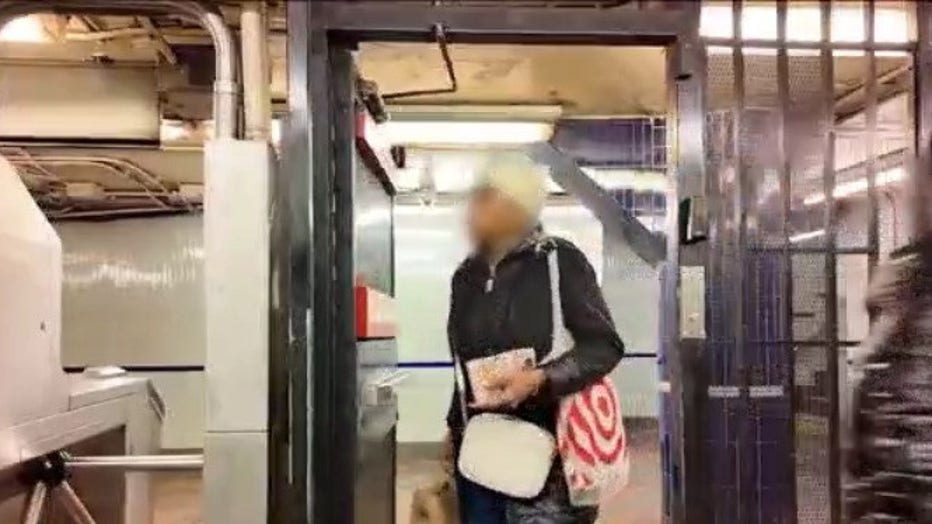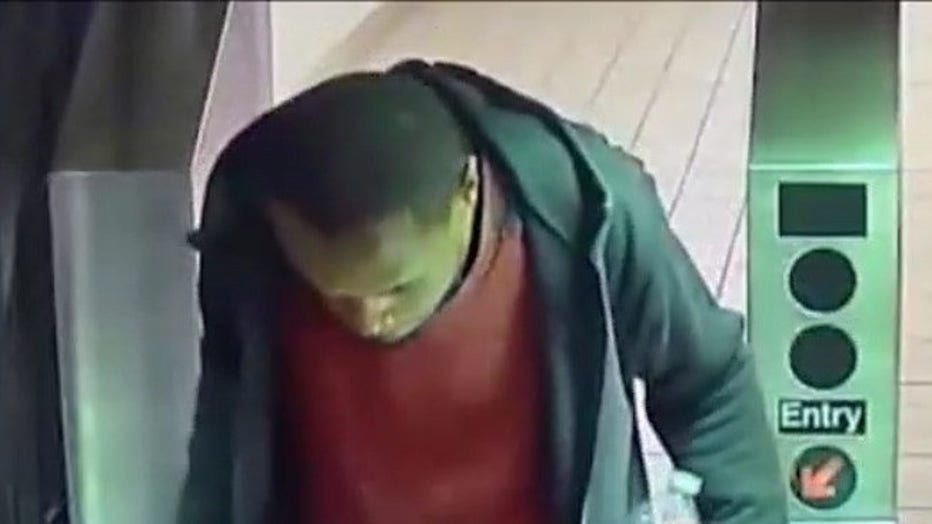Inside the NYPD crackdown on subway fare evaders in search of violent criminals

Inside the NYPD crackdown on subway fare evaders
FOX 5 NY's Michelle Ross road the subway with the NYPD to crackdown on subway fare beaters.
NEW YORK - As more police officers, state troopers, and the National Guard become more visible in the subways, one specific group of police officers is focusing on fare beaters to stop violent crimes before they happen.
The NYPD’s Transit Response Team, along with members of the Community Response Team, is seeking those who jump the turnstile or enter through the emergency exit to avoid paying, but it's not fare evasion that the NYPD is primarily targeting.
DCPI Deputy Commissioner Tarik Sheppard addressed the group of about two dozen officers before they were deployed into the subway system.
"People who do the most crime down here do not pay their fare, so just be careful with the fact that it looks like a low-level crime, but the person that you’re stopping has a violent history, has a weapon on them," Sheppard said.
NYPD Transit Bureau Deputy Chief Timothy Skretch says they remove weapons during these interactions.
"We recover multiple firearms from engaging individuals for theft of service," Deputy Chief Skretch said. "On top of that, we encounter hundreds of people with active warrants."
The NYPD made three arrests on Thursday night after confronting fare beaters. All three men had warrants.

Repeat criminals
One man who entered through the emergency exit at the Utica Av. station had a bench warrant for a robbery in Queens from November.
Another man at the Atlantic Av-Barclays Center station had a warrant and was in possession of pepper spray. He was also wearing a Moncler Jacket and sporting a Gucci bag, a designer outfit worth a few thousand dollars, but by not paying the $2.90 fare, he put himself in the spotlight.
The NYPD is not looking to single out people who cannot afford the fare. They're searching for transit recidivists -- those who repeatedly commit crimes in the transit system and chances are, the NYPD says, they’re not paying their fare before committing the crime.
"Reducing the amount of people who come into the system without paying is ultimately reducing felony crime because these are going to be the people who are going to have guns, they're going to have knives, [and] they're going push people on the tracks," Sheppard added.

Police say it's a small group of people committing most of the crimes. According to the NYPD, last year 38 people were arrested for assaulting MTA employees. Combine all the arrests of those 38 people and it comes out 1,126 career arrests.
Who goes after fare beaters?
The Transit Response Team responsible for going after the fare beaters in search of violent criminals is made up of regular police officers.
"They're highly motivated, dedicated officers," Skretch said. "They’re out here. They’re not subject to being on a fixed post at a turnstile, at a fixed post on a platform, being a slave to the radio answering 911 jobs all day.
Their main job is to be out in the system riding trains, engaging with customers, providing a sense of security."
Once a person jumps the turnstile, police will look up the man or woman in their phone and see if they have a criminal history. From the palm of their hands, police run the person's name through the system and are immediately notified if they're dealing with a recidivist.

Can you be arrested for not paying for the subway?
Not everyone who is stopped for fare evasion is put in handcuffs though.
Kaz Daughtry is Deputy Commissioner of Operations for the NYPD.
"You know, maybe this person is a runaway, needs help," Daughtry said. "We're not looking to put those people in jail. We're looking for the recidivists."
If the person does not have a violent history and not in need of services, a civil summons is usually issued.
And although subway crime is down, many riders still don't feel safe, so the NYPD is making sure its presence is felt.
"These are exactly the type of people we're going to take [for] a low-level offense and use it to get violent people out of the transit system," Sheppard added.
By carrying out these operations, they're working to improve the quality life for New Yorkers who just want to get home safely.

